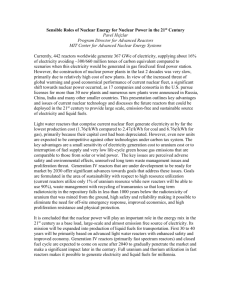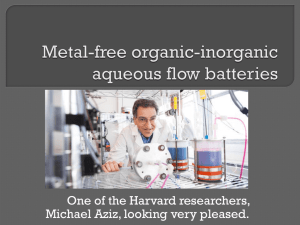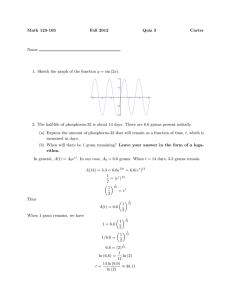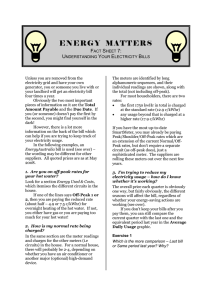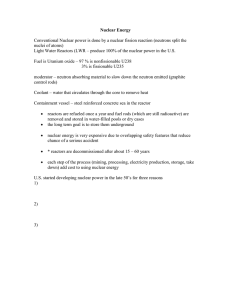Fission
advertisement
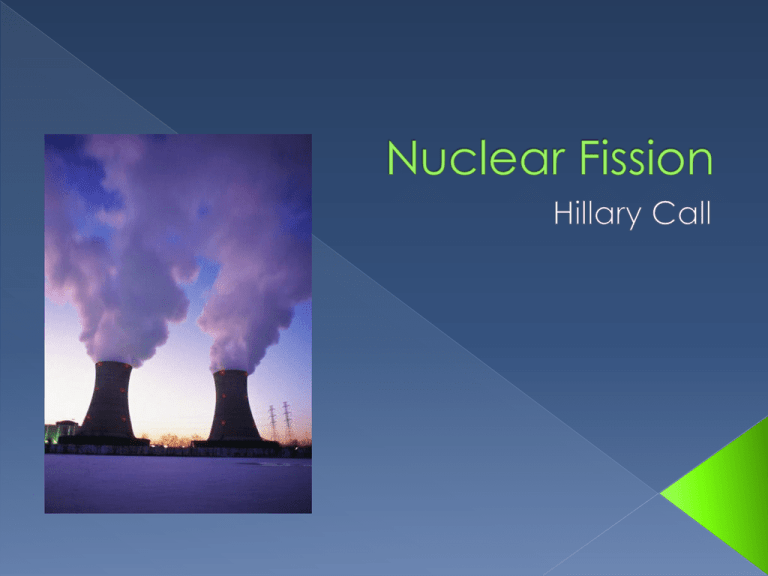
Benefits of Nuclear Energy How Fission Works Nuclear Power Plant Basics Overview of Uranium Fuel Cycle Energy Lifecycle of Nuclear Power Generation IV Reactors Technical Challenges Conclusions Continuous, reliable supply of energy Well-developed technology › 12,700 reactor-years of commercial experience › Accounts for ~16% of world electricity generation Extensive fuel supply › Breeder reactors › Fissile materials other than Uranium Water or other moderator slows neutrons, thermalizing them Thermal neutron collides with U235 Unstable nucleus splits in two Energy and neutrons are released Reaction repeats A common type of Light Water Reactor (LWR) http://www.eas.asu.edu/~holbert/eee460/pwrdiag.gif http://www.arevaresources.com/nuclear_energy/datagb/cycle/cyclerep.gif Energy Source Contribution by Mass Conversion to Energy Energy Contribution Coal 0.467 grams 0.00676 KWHr/gram 0.0031 KW-Hr Crude Oil 0.32 grams 0.011 KWHr/gram 0.0035 KW-Hr Lignite 0.234 grams 0.0038 KWHr/gram 0.00089 KW-Hr Natural Gas 0.115 grams 0.015 KWHr/gram 0.00173 KW-Hr Hydro-Electricity 0.00146 KW-Hr 1 0.00146 KW-Hr Wood 0.041 grams 0.0042 KWHr/gram 0.00017 Total 0.0107 KW-Hr Based on 3090 MW Forsmark plant operating for 40 years. http://nuclearinfo.net/Nuclearpower/TheScienceOfNuclearPower Radioactive waste storage/disposal › Yucca Mountain › Reprocess spent fuel Safety › Only fatalities from commercial nuclear power plant occurred at Chernobyl › Must overcome public fear neutron spectrum (fast/ thermal) coolant Gas-cooled fast reactors fast helium 850 Lead-cooled fast reactors fast Pb-Bi Molten salt epithermal reactors Sodiumcooled fast reactors fast temperature pressure* (°C) fuel fuel cycle size(s) (MWe) uses high U-238 + closed, on site 288 electricity & hydrogen 550-800 low U-238 + closed, regional 50-150** 300-400 1200 electricity & hydrogen fluoride salts 700-800 low UF in salt closed 1000 electricity & hydrogen sodium 550 low U-238 & MOX closed 150-500 500-1500 electricity 1500 electricity 250 hydrogen & electricity Supercritical waterthermal or cooled fast reactors water 510-550 very high UO2 open (thermal) closed (fast) Very high temperature gas reactors helium 1000 high UO2 prism or pebbles open thermal http://www.world-nuclear.org/info/inf77.html * high = 7-15 Mpa + = with some U-235 or Pu-239 ** 'battery' model with long cassette core life (15-20 yr) or replaceable reactor module U-238 captures a neutron and transmutes to Pu-239 Pu-239 is fissile like U-235 Increases efficiency of uranium use >50x Could use up depleted uranium stockpiles & plutonium from dismantled weapons http://www.atomeromu.hu/mukodes/tipusok/gyorsreak-e.htm 290 reactor-years of commercial experience Monju (Japan) and Superphenix (France) Not economically practical More costly to construct More difficult to operate Proliferation dangers associated with plutonium Nuclear fission is a viable energy source It cuts down on CO2 emissions, improving air quality New designs have made nuclear power safer and more economically feasible Issue of radioactive waste will need to be addressed

